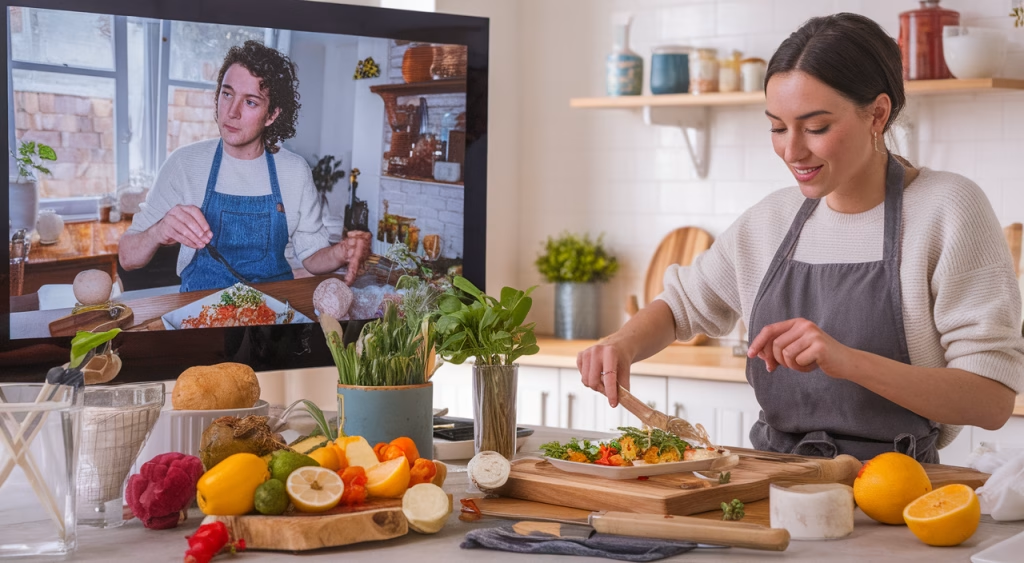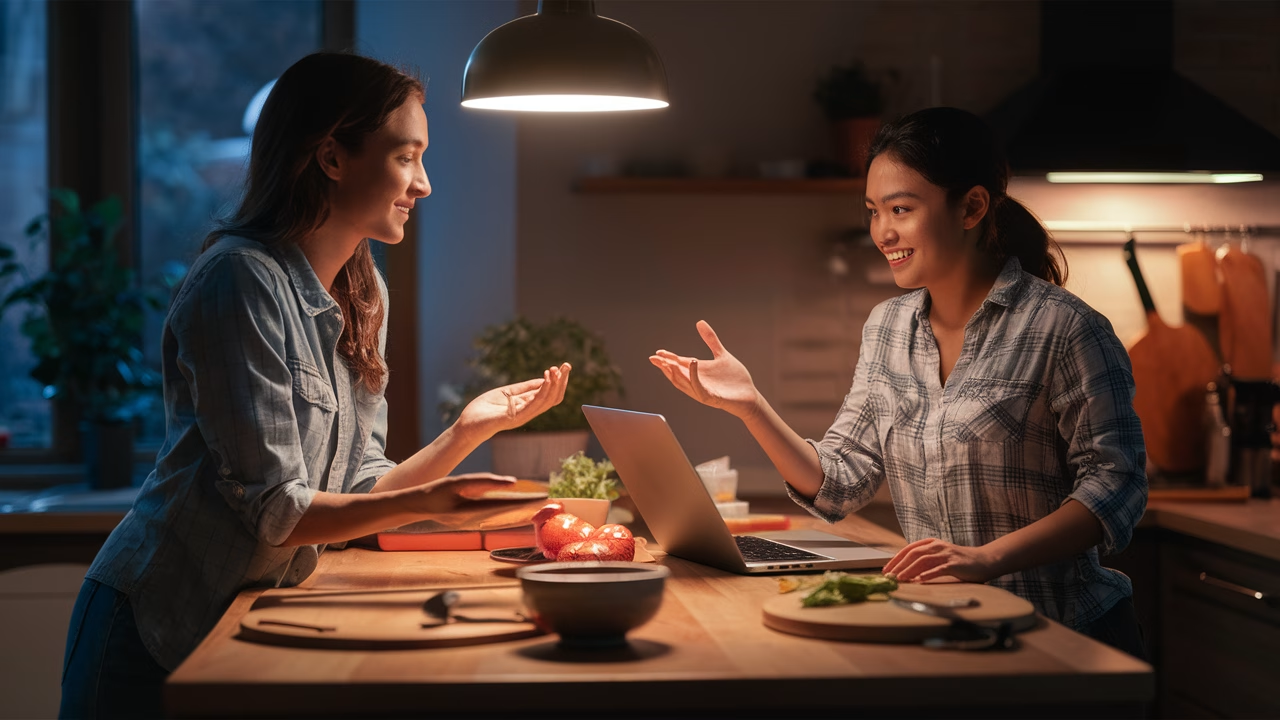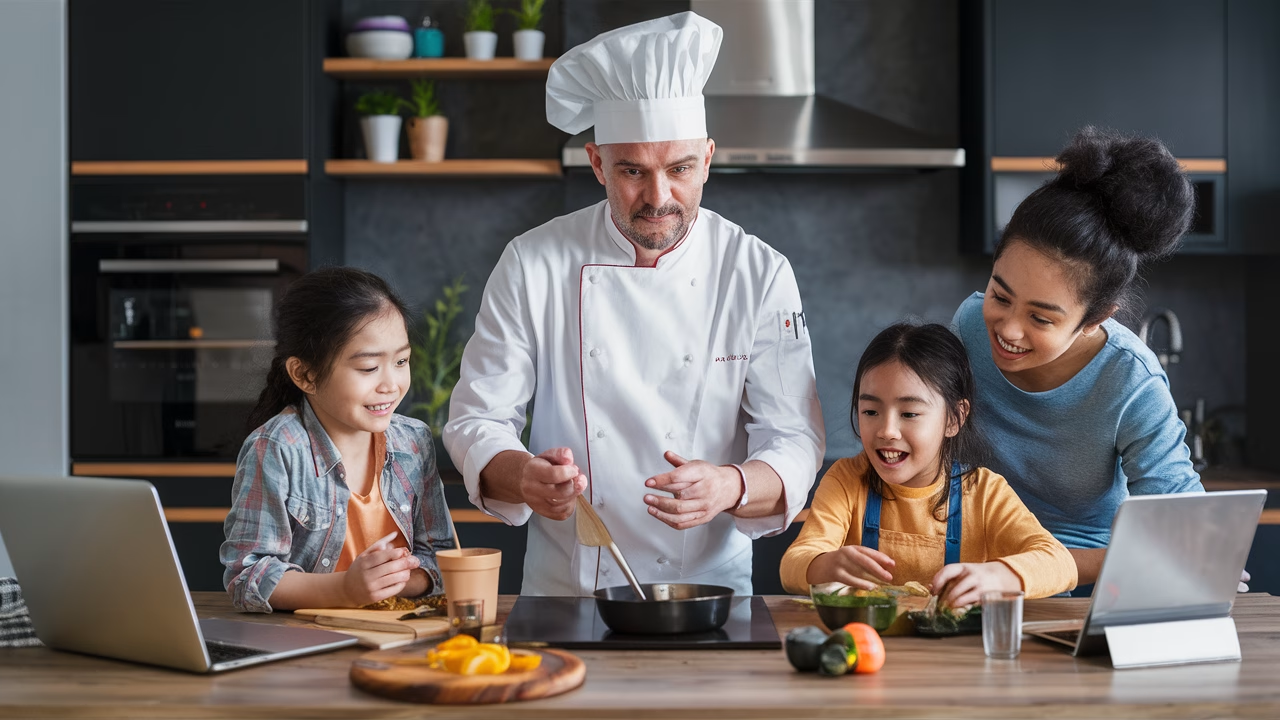Why are people paying $25/hour for virtual cooking lessons?
If you’ve ever found yourself drooling over a sizzling pasta video but unsure where to begin in your own kitchen, you’re not alone. Virtual cooking lessons have exploded in popularity because they solve a timeless problem: how to become a better cook without wasting time, food, or your sanity. And yes, many learners are glad to pay $25—or more—per hour for that expert guidance.
TL;DR
- Virtual cooking lessons offer hands-on skill-building from the comfort of your home.
- More than 70% of students report better confidence and meal quality after taking lessons.
- Popular formats include family-friendly sessions, gourmet courses, and best virtual cooking classes for beginners.
- Pricing varies based on experience, lesson type, and personalization levels.
- Instructors can optimize their earning potentials through value-added services like shopping lists, meal planning, and recording access.
Benefits of Virtual Cooking Lessons
Enhance Your Culinary Skills
Let’s be honest—reading a recipe off a screen and executing it flawlessly is not as easy as chefs on TV make it look. Virtual cooking lessons bring your recipe to life. With real-time instruction and personal feedback, novices can master knife skills, baking techniques, and flavor balancing without feeling overwhelmed.
Imagine a seasoned chef watching you dice an onion and gently coaching you through it. That’s the kind of focused attention these lessons offer. You pick up confidence, learn shortcuts, and avoid common mistakes you didn’t even know you were making when you teach cooking skills in your own kitchen.
Convenient and Flexible Learning
With virtual cooking lessons, there’s no commute, no dress code, and no awkwardness of a group class. You cook in your own kitchen, using your own tools and appliances, making the learning more relevant to what you’ll use every day. Many instructors even let you record the session or offer downloadable shopping lists ahead of time—another reason they’re worth the investment.
Types of Virtual Cooking Classes
Basic Cooking Techniques
These are the building blocks of culinary success. Think how-to-chop, how-to-boil-pasta-properly, cook-the-perfect-egg kind of classes. Popular among students searching for the best virtual cooking classes for beginners, these affordable online cooking tutorials focus on foundational skills that empower further exploration in the kitchen.
Gourmet Cuisine Workshops
If you’re past the beginner stage, gourmet-focused virtual cooking lessons feature signature dishes, international cuisines, and advanced techniques. A professional chef might guide you through plating five-star meals, tempering chocolate, or building your own pasta from scratch. Expect these sessions to be more in-depth, and yes, a bit pricier—which brings us to pricing.
Family-Friendly Cooking Sessions
Virtual cooking lessons for families are a unique blend of bonding and skill-building. They often include interactive games, simple recipes for all ages, and nutrition education. Parents love these classes not only because they keep kids entertained but also because they transform mealtime into a shared celebration.
Pricing Strategies for Virtual Cooking Lessons
Setting Your Rates
Wondering how much to charge for cooking lessons? Typically, it depends on your experience and the lesson type. Here’s a breakdown to consider when you teach virtual cooking lessons:
| Lesson Type | Low-End | Mid-Range | High-End |
|---|---|---|---|
| Basic Skill Tutorial | $15/hr | $25/hr | $40/hr |
| Family Sessions | $20/hr | $30/hr | $50/hr |
| Gourmet Cuisine | $30/hr | $50/hr | $100+/hr |
Value-Added Services
Boost your earning potentials when you teach virtual cooking lessons by offering meal planning, ingredient substitutions, ongoing support, or recorded videos. These are compelling selling points that allow you to charge premium rates. For repeat clients or subscribers, bundling lesson packs—like 4 sessions for the price of 3—keeps students engaged and incomes more predictable.
Promotions and Discounts
Don’t underestimate the power of referrals or first-time discounts. Many successful instructors thrive on loyalty and word-of-mouth. Seasonal classes—holiday cooking or summer baking camp—also tend to spike demand, allowing for premium pricing when you teach these specialized virtual cooking lessons.
Finding the Right Virtual Cooking Instructor
Qualities to Look For
Ever taken a class where the instructor barely looked up from their recipe? Avoid the monotone. A great virtual cooking coach is interactive, encouraging, and tuned into your energy and pace. Look for instructors who offer trial classes or portfolio videos showcasing their teaching style.
Credentials matter—but so does warmth. In virtual cooking lessons, chemistry between student and teacher plays a key role in how much you retain and enjoy. Read reviews, ask about lesson formats, and see if they align with your personality and learning goals.
Personalized Instruction Options
Some learners thrive with one-on-one attention. That’s where personalized virtual chef instruction shines. These sessions allow the instructor to adjust based on your dietary needs, kitchen tools, culinary curiosity, or even your mood. Some students have reported more progress in two personalized sessions than a month of free YouTube videos.
Success Stories from Virtual Cooking Students
Consider Emily, a once-nervous beginner who couldn’t tell a julienne from a sauté. After 3 months of virtual cooking lessons, she’s now meal prepping five dishes a week, confidently improvising with spices, and inspiring her teenage son to co-cook.
Or Ron, who turned his Sunday Zoom cooking sessions into a paid gig for neighbors. He used the skills and business insights from his instructor to start offering affordable online cooking tutorials in his neighborhood via group calls—eventually earning $30/hour when he decided to teach virtual cooking lessons himself.
These stories reflect not just culinary growth, but personal transformation. Confidence, creativity, and healthier meals start blooming in places you’d never expect—all thanks to structured, expert-led virtual cooking lessons.
Cost Guide for Students and Instructors
| Session Type | Cost Range (Per Hour) | Best For |
|---|---|---|
| Basic Class | $15–$30 | Beginners on a budget |
| Family Lesson | $20–$40 | Parents with kids |
| Gourmet Experience | $40–$100+ | Foodies or advanced chefs |
| Private Personalized | $50–$75 | Serious learners or dietary needs |
Final Thought
Paying $25/hour for virtual cooking lessons isn’t just about learning a new recipe—it’s an investment in a lifestyle. Whether you’re tackling your first risotto or want your children to know how to stir-fry, these online experiences reshape how we view food, learning, and connection. And for aspiring instructors, this trend unlocks purpose-driven income without fancy studio setups when you teach virtual cooking lessons.
If you’re ready to level up, learn more, or even teach—one thing’s clear: the kitchen just went digital, and everyone’s invited to discover their earning potentials.
Frequently Asked Questions
- What do I need to get started with virtual cooking lessons?
All you need is a device with internet access, basic kitchen tools, and a willingness to learn. Most instructors provide a list of ingredients and gear before the class. - Are virtual cooking classes beginner-friendly?
Absolutely. Many offer tiered sessions or are designed for those who can barely boil water. You’ll start small and build confidence week by week. - Can I book private virtual cooking classes?
Yes. Private sessions offer personalized pacing, instruction tailored to your dietary restrictions, and one-on-one attention maximized for your goals. - Is it possible to make money teaching virtual cooking?
Yes, especially if you offer engaging instruction, clear pricing, and bundle value-added services like meal plans. Some instructors earn $1000+/month part-time. - What is the typical duration of a virtual cooking class?
Classes range from 45 minutes to 2 hours depending on the complexity of the dish. Intro sessions often are shorter, while gourmet meals may take longer. - Do virtual cooking lessons include ingredient kits?
Some do, especially if priced higher or if the class is part of a special occasion. Others provide a shopping list so you can prep beforehand.



